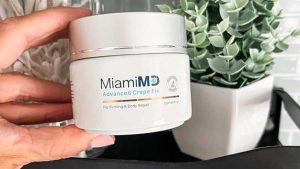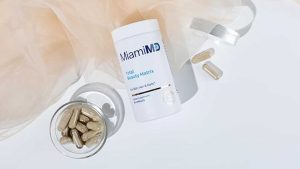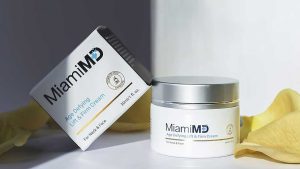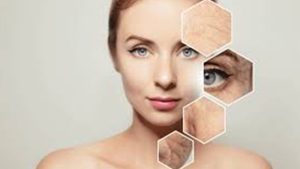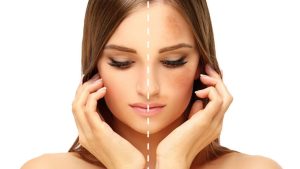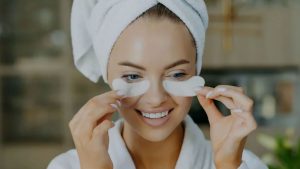How To Improve Your Skin Texture
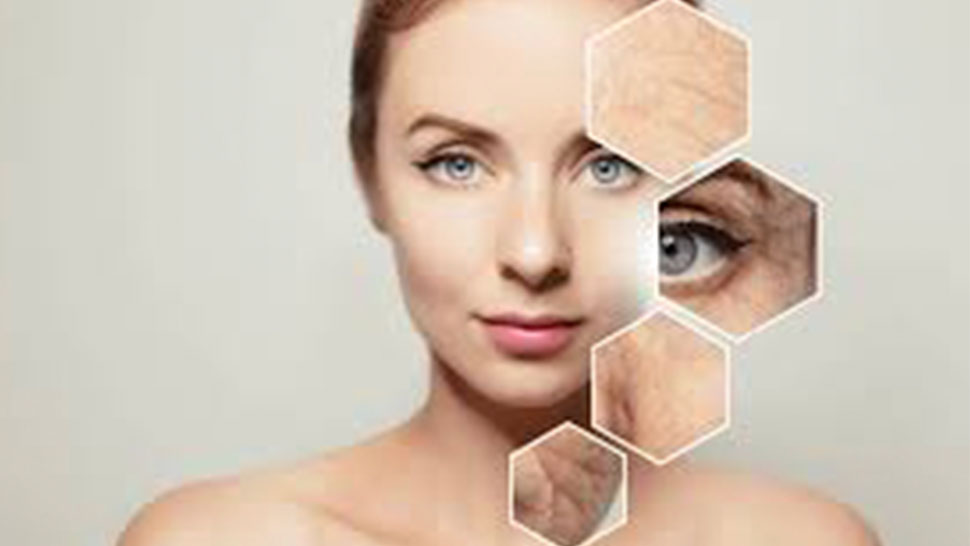
Picture running your fingers across your face and feeling nothing but silky smoothness. Sounds impossible? Not anymore.
Smooth, radiant skin might seem like a privilege reserved for celebrities and their expensive treatments, but achieving refined skin texture is actually within reach for anyone — if you know the right approach.
Uneven skin texture is a common concern for many people. From rough patches to bumps or dullness, textural issues can make your skin appear tired and aged. However, with a consistent routine, targeted treatments, and a little patience, you can transform your skin and enjoy that coveted, smooth-to-the-touch feeling.
So, if you’ve been searching for ways to smooth out your skin and reclaim its natural glow, you’re in the right place. In this blog, we’ll walk you through the key causes of uneven skin texture and share proven strategies to refine, soften, and enhance your skin.
With the right tips and tools from MiamiMD, flawless skin is closer than you think.
What Causes Uneven Skin Texture?
Uneven skin texture occurs when the surface of the skin becomes rough, bumpy, or dull, making it appear less radiant and smooth. It’s often a result of several underlying factors, ranging from environmental damage to internal changes within the skin. This texture irregularity can appear as dry patches, enlarged pores, or areas that look and feel less refined.
It’s important to note that uneven skin texture isn’t a one-size-fits-all issue. Different skin types and lifestyles can influence how and why it develops.
Factors like genetics, age, and skincare habits all play a role in determining the texture of your skin. Understanding these causes is the first step toward addressing and improving texture issues.
Below, we’ll explore the most common culprits behind uneven skin texture and how they can impact the overall look and feel of your complexion.
Genetics
Your skin type and texture are largely influenced by genetics. If your family has a history of rough or uneven skin, you may be more prone to similar issues.
For example, genetic factors can determine how much oil your skin produces, your pore size, and your skin’s natural ability to shed dead cells.
According to Dr. Shereene Idriss, a board-certified dermatologist, “While you can’t change your genetic predisposition, you can manage its effects with a consistent skincare routine tailored to your skin type” (1).
Breakouts
Acne and frequent breakouts can significantly impact skin texture. When a pimple forms, it can leave behind scars or uneven patches once it heals, mostly if the skin is picked or inflamed. Post-inflammatory hyperpigmentation (PIH) and lingering redness from acne can also make skin look less smooth.
Dr. Whitney Bowe, a dermatologist and skin health expert, emphasizes, “Treating acne early and avoiding the temptation to pick at blemishes is one of the best ways to prevent long-term texture issues” (2).
Skin Conditions
Chronic skin conditions, such as eczema, psoriasis, or rosacea, can disrupt the skin’s natural barrier and lead to uneven texture. These conditions often cause dryness, flaking, redness, or bumps, which can result in an overall rough appearance.
If you have an underlying skin condition, it’s important to work with a dermatologist to manage flare-ups and strengthen your skin barrier. Treatments like prescription creams or professional therapies can improve both the condition and the texture concerns associated with it.
Sun Damage
Prolonged exposure to the sun’s ultraviolet (UV) rays is one of the leading causes of uneven skin tone and texture. Sun damage breaks down collagen and elastin, the proteins responsible for keeping skin firm and smooth. This can lead to roughness, fine lines, and dark spots over time.
Dr. Doris Day, a dermatologist and author of Beyond Beautiful, warns, “Even small amounts of unprotected sun exposure can accumulate over the years, leaving skin looking rough, dry, and aged.”
Aging
As we age, our skin naturally loses collagen, elastin, and moisture, leading to changes in texture. Fine lines, wrinkles, and a rougher complexion often develop as the skin’s ability to renew itself slows down. Cell turnover also decreases with age, causing dead skin cells to build up on the surface and contribute to rough skin and other skin texture issues.
Dr. Howard Murad, a dermatologist and founder of Murad Skincare, explains, “Aging is inevitable, but its effects on skin texture can be minimized with proper hydration, sun protection, and targeted skincare products” (3).
How Can You Improve Skin Texture?
Improving your skin texture goes beyond quick fixes or generic solutions. It’s about adopting consistent skincare habits, making thoughtful lifestyle choices, and incorporating targeted treatments into your routine.
Uneven texture can stem from a variety of causes, but with the right strategies, you can address these issues and transform your skin’s look and feel.
By tackling the real causes of roughness, dullness, or bumps, you can restore your skin’s natural smoothness and radiance. Whether it’s through exfoliation, hydration, or sun protection, even small changes to your routine can lead to noticeable improvements over time.
With dedication and the right tools, achieving a soft, glowing complexion is not only possible. It’s within reach.
Exfoliate Regularly
Exfoliation is one of the most effective ways to improve skin texture. By removing dead skin cells from the surface, you can reveal fresher, smoother skin underneath.
There are two types of exfoliation:
- Physical exfoliation: This involves using scrubs or brushes to manually remove dead skin cells and flaky patches. Be gentle when using physical exfoliants to avoid irritating the skin.
- Chemical exfoliation: Products with chemical exfoliators like glycolic acid, lactic acid, or salicylic acid can dissolve dead skin cells and help with rough texture without the need for scrubbing.
Dr. Joshua Zeichner, director of cosmetic and clinical research in dermatology, recommends starting with chemical exfoliation once or twice a week.
“Chemical exfoliants are particularly effective for refining texture and promoting cellular turnover, especially for those with sensitive or acne-prone skin,” he advises (4).
Cleanse Twice a Day
Cleansing your skin morning and night is essential for maintaining a smooth texture. Throughout the day, dirt, oil, and environmental pollutants can accumulate on the skin’s surface, leading to clogged pores and a rough appearance.
A gentle, hydrating cleanser can remove impurities without stripping your skin of its natural oils. Look for ingredients like glycerin or hyaluronic acid to keep your skin balanced and hydrated after cleansing.
Protect Your Skin From the Sun
Sun protection is crucial for preventing further damage and maintaining a smooth complexion. A broad-spectrum sunscreen with SPF 30 or higher can protect your skin from both UVA and UVB rays, which contribute to roughness, fine lines, and discoloration.
Dr. Bowe advises, “Make sunscreen a daily habit, even on cloudy days or when you’re indoors near windows. Consistent protection is key to preserving your skin’s texture and overall health.”
Use Targeted Skincare Products
Incorporating targeted treatments into your skincare routine can help address specific texture concerns.
MiamiMD’s Advanced Crepe Fix is an excellent option for improving crepey, thinning skin. This rich cream is formulated with powerful ingredients like Wakastim, a marine extract that repairs and hydrates the skin’s barrier, and caprylyl glycol, a humectant that locks in moisture to keep skin healthy.
By applying the cream to areas of concern, such as the neck, chest, or arms, you can restore elasticity and achieve smoother, firmer skin. Using Advanced Crepe Fix consistently can also help reduce the appearance of fine lines and uneven patches.
Stay Hydrated
Hydration plays a vital role in maintaining smooth skin texture. When your skin is dehydrated, it can appear dry, rough, and flaky. Drinking enough water throughout the day can help improve skin elasticity and support its natural barrier function.
Additionally, using a hydrating moisturizer with ingredients like hyaluronic acid, squalane, or glycerin can help lock in moisture and keep your skin feeling soft and supple.
Maintain a Balanced Diet
What you eat has a significant impact on your skin’s health and texture. A diet rich in antioxidants, vitamins, and minerals can support collagen production and fight free radical damage. Foods like berries, leafy greens, nuts, and fatty fish are excellent for promoting healthy, glowing skin.
Dr. Murad emphasizes the importance of nutrition, stating, “Eating a balanced diet with plenty of water-rich fruits and vegetables can make a noticeable difference in the appearance and feel of your skin.”
In contrast, consuming too much sugar, processed foods, or unhealthy fats can contribute to inflammation and worsen texture issues. Strive for a balanced diet that nourishes your skin from the inside out.
The Bottom Line
Improving skin texture requires consistency and care, but the results are worth the effort. By understanding the causes of uneven texture, such as genetics, sun damage, or aging, you can take targeted steps to address and prevent these concerns.
Start by exfoliating regularly, cleansing twice a day, and protecting your skin from the sun with a high-quality sunscreen. Incorporate targeted treatments like MiamiMD’s Advanced Crepe Fix to address specific areas of concern, and don’t forget the importance of hydration and a balanced diet for overall skin health.
With the right combination of skincare and lifestyle habits, you can achieve smoother, healthier, and more radiant skin.
Resources:
- The Center for Advanced Dermatology. Genetics In Skin Health.https://www.mddermsolutions.com/.%20the-role-of-genetics-in-skin-health-understanding-your-skin-type-and-its-unique-needs/
- Cleveland Clinic. Treating acne early and avoiding the temptation to pick at blemishes is one of the best ways to prevent long-term texture issues. https://my.clevelandclinic.org/health/diseases/12233-acne
- Harvard Health Publishing. Skin care for aging skin: Minimizing age spots, wrinkles, and undereye bags. https://www.health.harvard.edu/staying-healthy/skin-care-for-aging-skin-minimizing-age-spots-wrinkles-and-undereye-bags
- Reviva Labs. A Guide to Chemical Exfoliants.https://www.revivalabs.com/a-guide-to-chemical-exfoliants/
